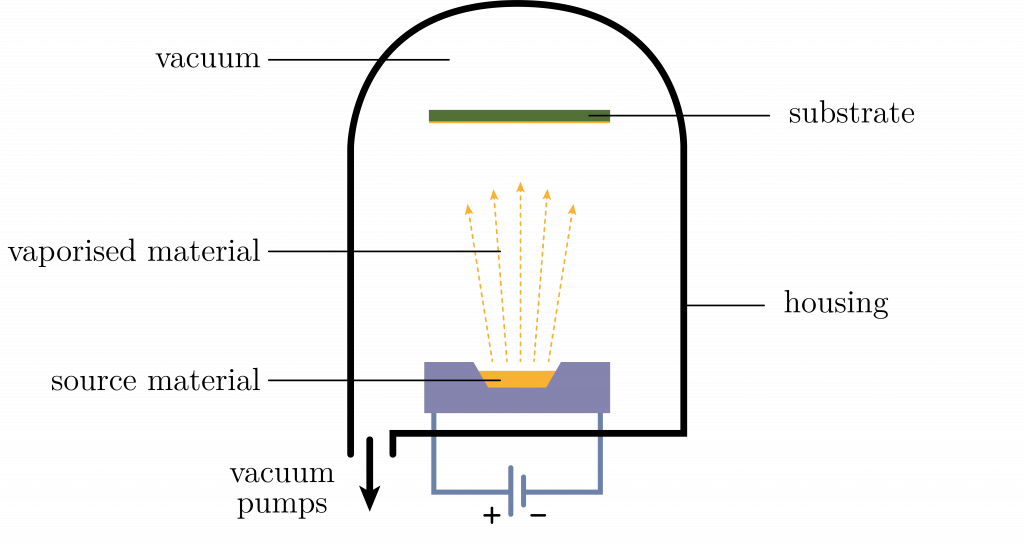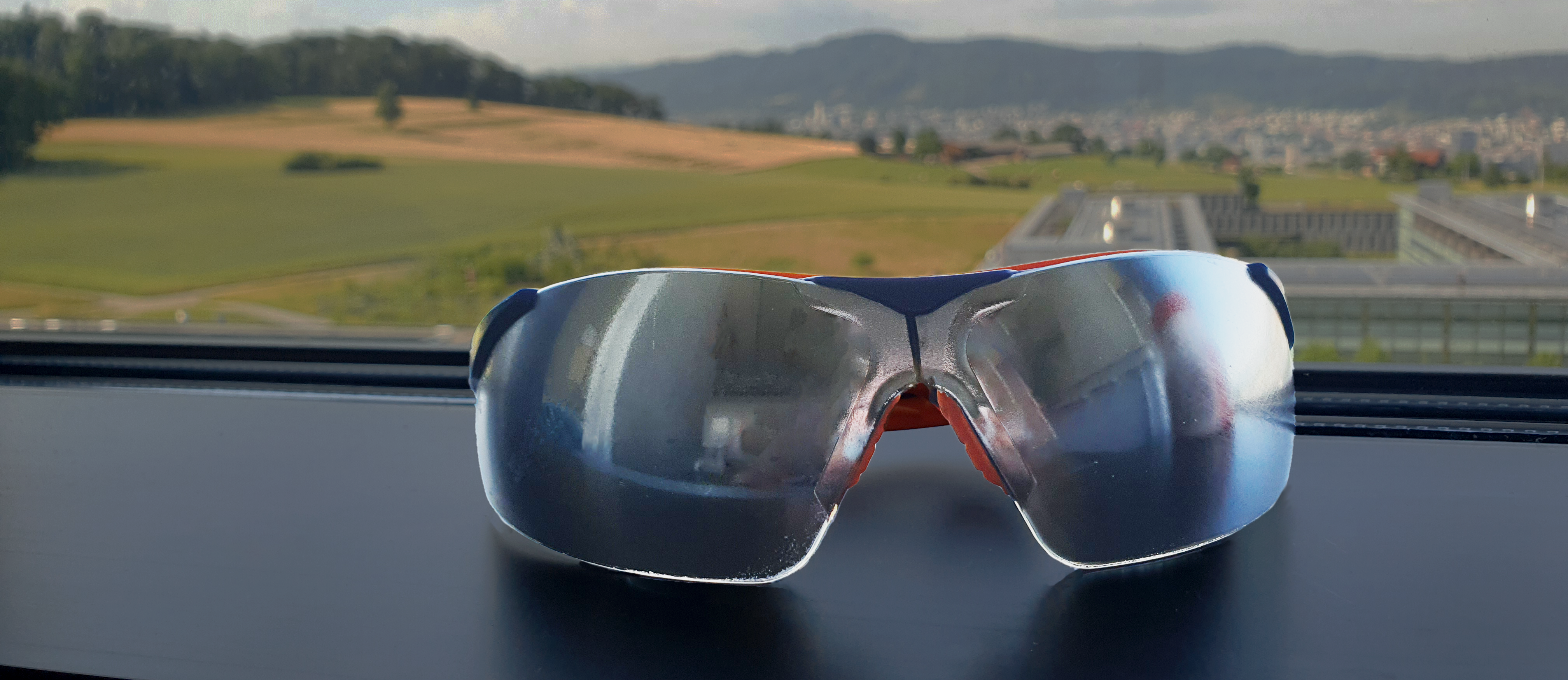In the scope of ETH outreach week, my colleague Patrick and I showed high school students how thermal evaporation works. The idea of this week is to give high school students from Switzerland and abroad can get hands-on insights on different study programs, in our case materials science. We first introduced them to the general basics of thin films in general, absorption and different principles of film deposition.
In our case, a thermal evaporator was used to vaporise the source materials. Following, a sketch of the device is shown. It is an easy principle: in an evacuated volume, the material is heated inside a crucible until atoms and small cluster are evaporated. The vacuum is needed to prevent contamination of the film and to ensure the particles reach the substrate. At the substrate, the atoms and clusters condensate on the surface and form a film, just as any other surface inside the chamber.

The students were allowed to carry out all steps by themselves under supervision. Firstly, the lab safety glasses had to be prepared and cleaned well. Then, they were placed inside the chamber, which was evacuated next. Now, the source materials were melted by resistive heating, while slowly increasing the power the evaporation rate was observed via an oscillating quartz crystal. After the desired rate was reached, the shutters were opened and the Poly(methyl methacrylate) (PMMA) glasses were coated.
The students were able to decide from different materials, where aluminium and copper have been the most common choices. Some tried some more interesting ideas, like making a bronze alloy from copper and tin. As explained in our introduction, absorption rates vary among the used materials. For example, 100 nm thick aluminium films will completely reflect the light while copper of the same thickness is still quite transparent.

Especially for sunglasses, it is important to have UV filters to protect the eyes. We made sure that materials we evaporated block most of UV light (below 350 nm wavelength) to have safe sunglasses. Anyway, since we did not deposit a sealing layer, our films are not scratch resistant. Therefore, our sunglasses are more meant to be a nice souvenir from their week at ETH Zürich.


